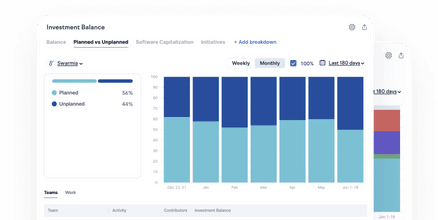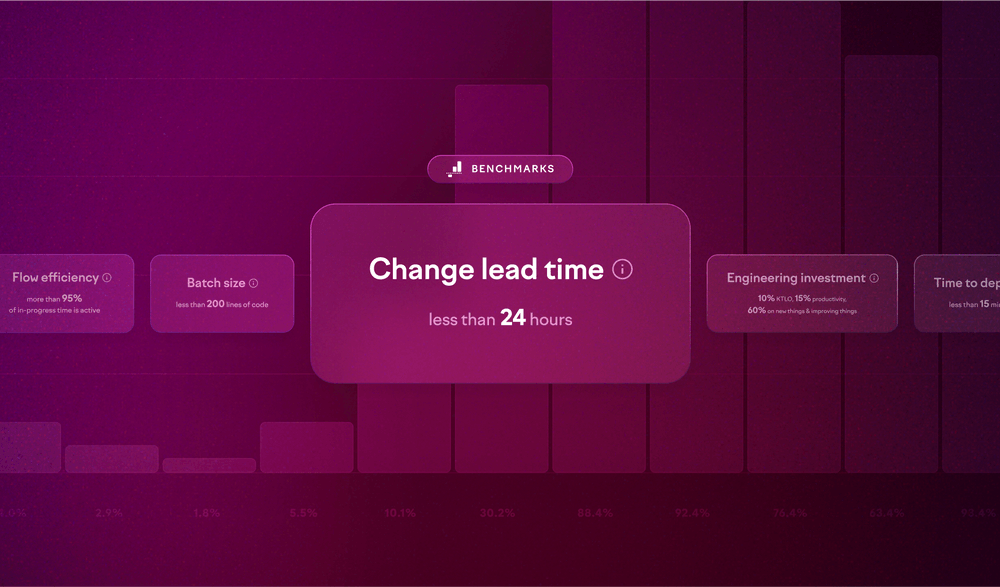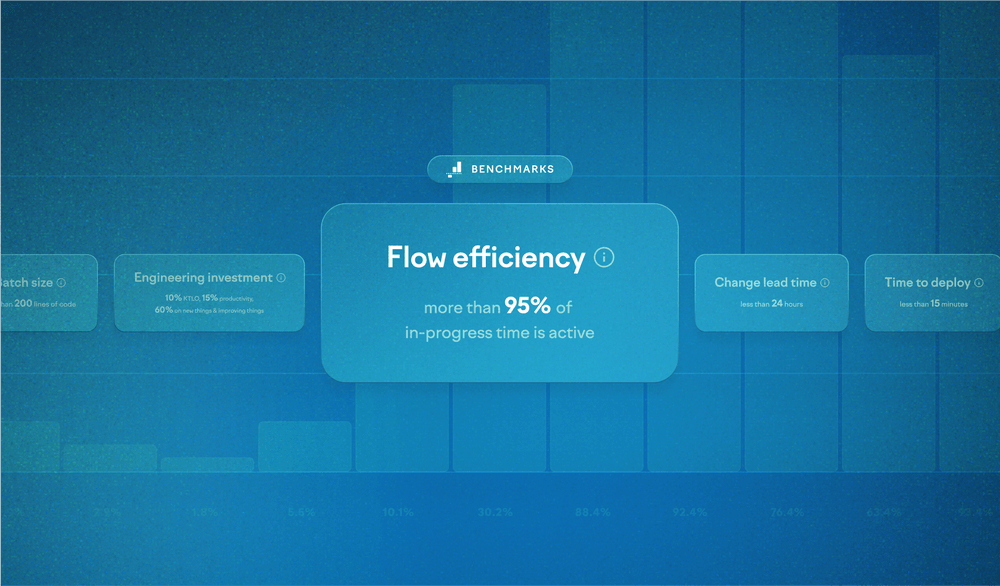Rebecca Murphey · Mar 15, 2024
Sensible benchmarks for evaluating the effectiveness of your engineering organization
If you’re digging into engineering metrics for the first time, it can be hard to know what “good” looks like. The urge is strong to find a way to compare yourself to other companies using…
Read more→Rebecca Murphey · Aug 8, 2024
Engineering benchmarks: A guide to reducing change lead time
Change lead time or lead time for changes — the time between when a task is started and when the resulting code is in production — is one of the fundamental indicators of team health. When the…
Read more→Rebecca Murphey · May 24, 2024
Engineering benchmarks: A guide to improving flow efficiency
When you’re trying to improve the effectiveness of your software engineering organization, a handful of metrics can help you identify specific opportunities. One of those metrics is flow…
Read more→







